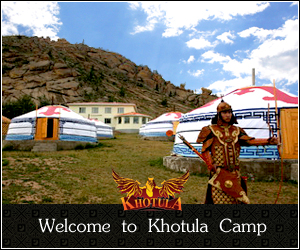Hun’s Yurt
 According to scientists, Yurt has an origin when nomadic and hunter tribes separated from each others. By the end of 19th century almost 100 ethnic were using Yurt around the world. Some of them still use Yurt even today. They are some republics of former Soviet Union such as Turkmenistan, Uzbekistan, Tajikistan, Kyrgyzstan, Khalimag, Tuva, Bashkir, Tatar, Kurd, Nogai, Hyagas, Yurukin of Turk.
According to scientists, Yurt has an origin when nomadic and hunter tribes separated from each others. By the end of 19th century almost 100 ethnic were using Yurt around the world. Some of them still use Yurt even today. They are some republics of former Soviet Union such as Turkmenistan, Uzbekistan, Tajikistan, Kyrgyzstan, Khalimag, Tuva, Bashkir, Tatar, Kurd, Nogai, Hyagas, Yurukin of Turk.
People’s Republic of China, Inner Mongolia, Hazara in Afghanistan and Mongolia. Today’s Uyrt with lattice walls are not the original version of Yurt. Around 10 thousand years ago, transitional period from wigwags to Yurt had started among the people settled to day’s Ural mountains, Lake Baikal, Siberia, Central Asian regions and continued till 4 thousand years ago.
Huns Yurt
An evidence to identify the shape of Yurt used by nomadic tribes around 3000s BC is a Yurt of Huns. The Huns had existed from 100s to 300s BC. Chinese historian Syma-Tsen noted in his book that “The Huns dominated Central Asian territory for almost a thousand year from the time of ancient Chinese king Shun-Wei till the time of Hun’s king Modun-Shanui (176-209 BC). There are no historical evidence belongs to Huns before that time.
However an exact time when Huns began to use Yurt is not clear, we’ve got some chance to guess shape and structure of Hun’s Yurt based on some research materials. For example: On the basis of researches made on findings such as dugout Erukens used by Huns, tomb of Kazanyluk in Bulgaria that has structural similarities of Mongol Yurt and paintings on the wall of Anfester shrine, scientists created the image of Hun’s Yurt which has round shape and conical top. The Huns established their independent state at first of all other nomadic tribes. One of few archaeological findings discovered from our territory is a stain carpet found at tomb of Noyon Mountain. That carpet expresses the cultural creatures of that time. It also proves that Huns of that time had owned livestock breeding and used its productivities.
Although Huns used dugout Eruken at the beginning, their everyday life quickly transferred into above ground homes and the designs and structures of them were continuously being improved. They also began using various kinds of inserting joints to make furniture and Yurt pieces more bearable. For these purposes they started using many different tools such as saw, plane, big and small chisels and axes. It is undeniable that felt Yurt was originated from times of Huns. For example: It was mentioned in some historical books since 1500s B.C that the Huns did use Yurt. This fact is also noted in some historical documents about lifestyle, traditions of Huns. Reports in some Chinese historical books and scriptures are not a proof of exact time when Huns first settled Central Asian region. On the contrary in the historical books of China there are few document; about how tribes of Huns became enemies and how the power of leaders got immense.
1400 years later the first documents about the civilization of Huns had been written, Syma-Tsen noted in his book in 104 B.C that: “Within 1 thousand years the Huns not only became powerful but also deteriorated, thereby it is not possible to identify how they transferred from one rule to another”. Also book called “Shi-Tsi historical travelogue” by ancient Chinese historian Syma-Tsen says that “The Huns resided in dugout Eruken”.
Syma-Tsen wrote that book based on the private documents of Chunhan Yue who was an ambassador to the king Laoshao Shanui, the successor of Hun’s great king Modun Shanui. Historian Bani Gu who lived in times of Mindi, the king of East Han state wrote in 94th chapter of West Han State history book that “Huns live in a large tents and call them a Hunlun Hunlu” He wrote that word by ancient Chinese scripts. From that time the Hun’s Yurt has been called Hunlun Hunlu. Furthermore, a scientist Taksin V. S studied the Chinese Yantelun writing and made a conclusion that there is no big difference between Hunlun Hunlu and cone shaped yurt of 13″‘ century.
Paintings on the book “Huajiao” about the sorrows of beautiful princess captured by the King of Huns were specially published in 1950. On those paintings showed the clothes of Huns, saddles for hors¬es and camels, bridle and many types of Yurt. Some researchers say this painting was created at the time of Sun state (581-618 A.D), but some argue this was created at the time of Min state (1368-1644). In this painting the Hun’s Yurt was drawn in two different types. How¬ever those two Yurt look like Turkish and Kyrgyz Yurt, it is clear that people created it had painted them based on the image of real Yurt. The Hun’s Yurt had also been used by Syanbi, Uhani, Muyun, Toba and Jujans who have same ancestry. But they had changed its designs and structures in conformity of their own traditions and lifestyles. There are some other evidences that Huns had a Yurt cart. One of them is the paintings of Tevsh Rock. This painting was created in the times of Hun’s ancestors. Huns did use special carts appropriate for the battles and travels.
Syanbi Yurt
The state of Syanbi had existed between 1024-1005 B.C. It is noted in the history that Syanbis had a Yurt which was inherited from Huns at the time of Lord Chen of West Chjou state. Since Syanbi, their successor tribes such as Tobas and Muyuns used Yurt too.
Jujans Yurt
The Jujans had existed between VI-VIII century A D. Scientist Khandsuren Ts wrote in her book “Tradition and lifestyles of Jujan” about Jujans had lived in Yurt. Jujans had dominated at central Asia for the certain period of time and after occupied by Turkish tribes in 555 BC. Thereby most of its people became the citizens of Turk. So the Yurt inherited from Huns began to be used by Turkish tribes. Especially Yurt was widely used among Turks who had settled Mongolian territory from 552 to 630 BC. Mongolians call the Yurt inherited from that time a “Kazakh Ger”. In fact the type of Yurt known as “Kyrgyz Ger” among western researchers is a Hun’s Yurt. But the Hun’s Yurt had been changed its images and designs under the influence of Turkish tradition.












